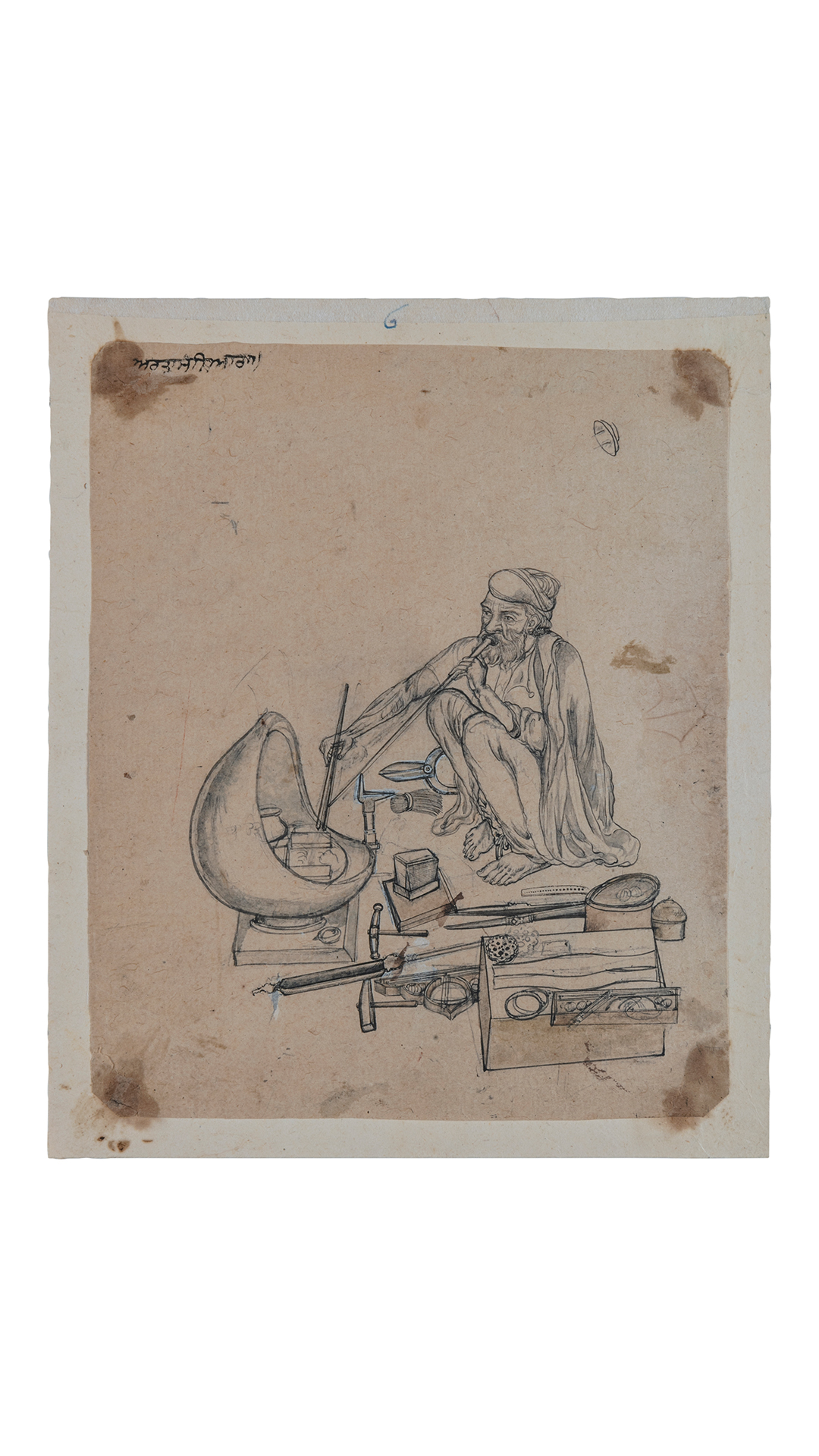Goldsmith
Description
In the early 19th century Punjab, during the reign of Maharaja Ranjit Singh the artists were greatly patronized. The state of Patiala and Kapurthala also gave similar patronage. Apart from royal patronage, another source of encouragement came from the British officers who were employed in the East India Company or in the royal courts. They commissioned artists to portray and record the cultural diversity of India. The arrival of the British and Europeans already opened up new avenues for indigenous artists to learn and adopt the techniques of western art. This led to the emergence of a new genre of style which included very interesting and informative documentation of everyday life, professions, and characters.
These sketches of ordinary folk brought a new world of everyday people, craft, and professions which was not commonly seen in the court art of India. Kehar Singh and Kapur Singh were the two very sensitive artists of this time who captured the minute details with sensitivity and warmth. Kapur Singh went to the court of Lahore in search of patronage. During the course, he got exposed to the European watercolor technique and accuracy when the Sikh rule was replaced by British rule. Many of their sketches made by him are scattered around the collection of Museums. The one published here presents a detailed depiction of a traditional goldsmith. The lines of experience stretched on his face, the acute professional concentration, and the details of essential paraphernalia are very faithfully recorded by the artist. He mentioned the name of the person in takari on the left corner of the sketch.
Karl and Meherbai Khandalavala Collection.
Collection
Indian Miniature Paintings
Object Type
Painting
Material
Pencil and charcoal??
Schools/Culture/Period
Pahari
Technique
--
Date
Mid 19th Century CE
Location
Lahore
Dimension
19.5 x 23.8 cms.
